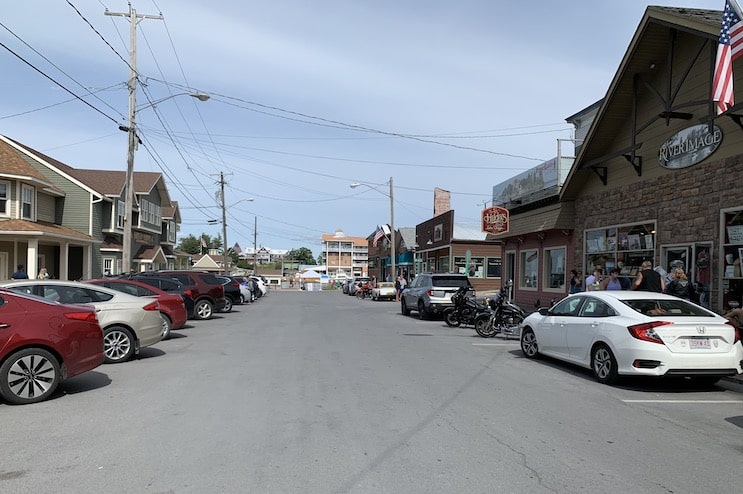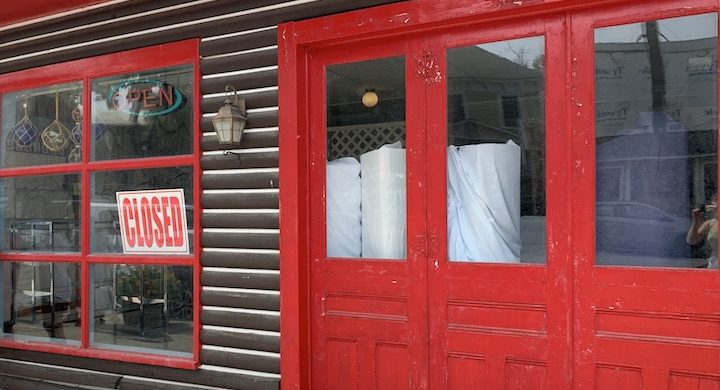By Ben Oleksinski
There are some places in the world where political boundaries don’t prevent foreigners from becoming neighbors and people living astride the frontier share experiences and economies with friends from the other side. One such place is the U.S.-Canada border where friends holding different passports share some of the hemisphere’s best fishing and boating.
On most Labor Day weekends, riverside villages like Alexandria Bay, NY would be filled with Canadian license plates and people. This year it felt half empty due to travel restrictions designed to prevent the spread of the coronavirus.
The Thousand Islands are an extensive chain of islands in the Saint Lawrence River that serves as a border between Canada and the U.S. Traditionally, they are a shared destination that supports the economies on both sides. This summer their economic impact is minimal.
Hospitality and tourism businesses are down across the region. Most businesses on the Thousand Islands are getting by since RV, boat and jet ski sales remain strong. But there’s no doubt Covid-19 has diminished the islands’ most crucial season.
“There were some folks who had okay years, there were others who were hurt very severely,” said Corey Fram, director of tourism for 1000 Islands International Tourism Council. “Overall, we’re happy with how the year went but this was a season of adjusted expectations.”
But without a large part of the clientele coming in from Canada, travel economies are disadvantaged in ways never seen before.
Normally, out-of-state visitors make up 35-40 percent of the group tours at Dave Cortright’s Reel Commander Fishing Charter in Alexandria Bay, NY. But during this past Labor Day weekend only New York state residents bought space on fishing charters. An additional problem was that some excellent fishing spots in Canadian waters were inaccessible. Scowls Cortright: “If we even look at the Canadian border, they’ll pull us over.”
These restrictions don’t go both ways. Cortright says commercial boat tour operators from the counterpart town of Rockport, Ontario can cruise in U.S waters.
Uncle Sam Boat Tours, an operator in Alexandria Bay, has ferried both Americans and Canadians around the islands for decades. This summer was their first without two-nation cruises due to the border closing.
Boldt Castle, a popular attraction located on Heart Island in the Saint Lawrence River, normally has Canadian boat tours stopping throughout the day. Built at the turn of the century, locals described it as the literal and sentimental heart of the Thousand Islands. With the border closure, however, an estimated 40 percent of visitors are gone. Lost admissions from 70-80,000 visitors combined with fewer gift shop, café, and special package sales to make the summer of 2020 the worst in memory for Boldt castle.

Boldt Castle is a popular attraction in the Thousand Islands, but this year it has experienced significant financial losses due to the closed border and fewer Canadian tourists.
According to the 1000 Islands International Tourism Council, Canadians make up 25 percent of visitors on the American side during summer. On top of that, 30-35 percent of visitors are what they called “non-New York Americans,” referring to those coming from out-of-state. At best the tourism and hospitality industries were only able to capture 40 percent of a normal market, effectively making the whole year a balancing act.
For comparison, Blaze Fournier, sales manager for Hucks Marine and Resort in Rockport, Ontario says Americans make up a third of their business or have property stored in their facility.
“We want to welcome guests but if they’re unable to come across it’s understandable,” said. Fournier “It’s unfortunate they can’t join us to create summer memories. A lot of them are legacies. This is maybe the first time in their lives they haven’t been able come up and take their boats out.”
Fram says the border shutdown hurts both sides of the river. “Up here we really do rely on Canadian visitors compared to the rest of New York state, and frankly the rest of the United States,” he says, adding “Here, the Saint Lawrence river is so narrow that waterfront communities have bars, restaurants and retail that rely on Canadians coming over daily. Some of those restaurants are only allowed to operate at reduced capacity anyway, so maybe it is self-fulfilling. But regardless it reduces the revenue.”
For Melissa Ringer-Hardy, owner and manager at Bella’s restaurant in Clayton, NY, the informal end of summer was her actual closing day for the year. She says it was hard to tell what kind of impact travel restrictions had because of the change in clientele.
“Canadians are normally 30 percent of our traffic, so the normal base isn’t here,” Ringer-Hardy said. “There were people traveling within New York who came here for the first time. Their presence helped. But this summer’s clientele was different, and we’re missing the Canadians for sure.”

A much smaller number of visitors traveled to the Thousand Islands this Labor Day weekend because of the closed U.S.-Canadian border. Sidewalks normally crowded with tourists were only partially full of people, who should have been wearing masks, but were not. Perhaps they thought masks unnecessary since they already were socially distanced.
What happens going forward is still unknown. Labor Day crowds reduced damage to the local travel industry, but continued restrictions remain a worry. The U.S.-Canada border will remain closed to all non-essential travel until at least September 21.
Travel and hospitality businesses along the Saint Lawrence border don’t advocate creating a regional “travel bubble” or sporadically opening the border at places deemed low risk. They prefer a more meaningful conversation about what the reopening eventually will look like. In the meantime, community business leaders look for an understanding of how to plan for the future and prevent close relationships from growing distant.
“So many of our residents here are used to running across the border for dinners and to pick up goods, or Canadians coming south of the border for groceries or school supplies,” says Corey Fram. “My concern is that the longer things stay like this, the more we’re apt to see unhelpful divisions in our destination.”![]()
Ben Oleksinski is a Newspaper and Online Journalism senior in the S.I. Newhouse School of Public Communications at Syracuse University.


